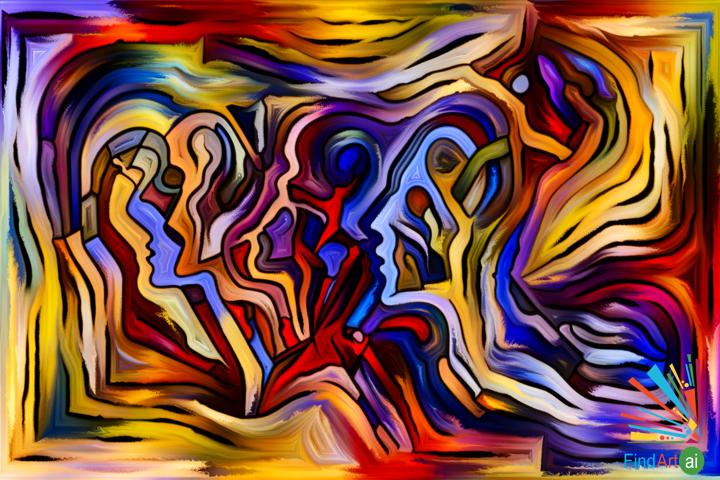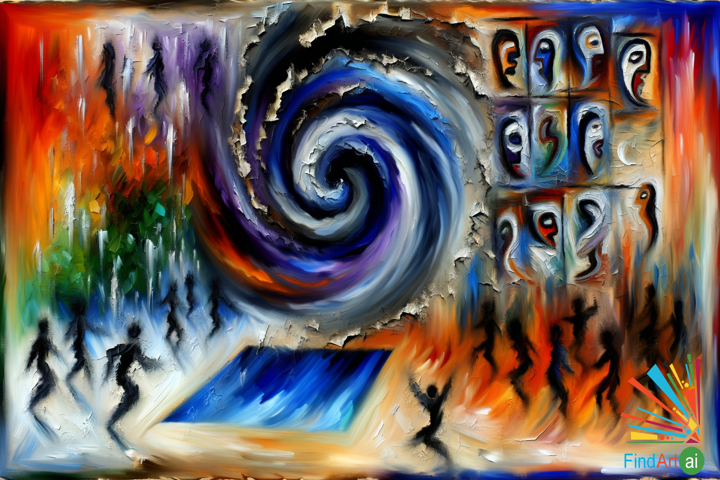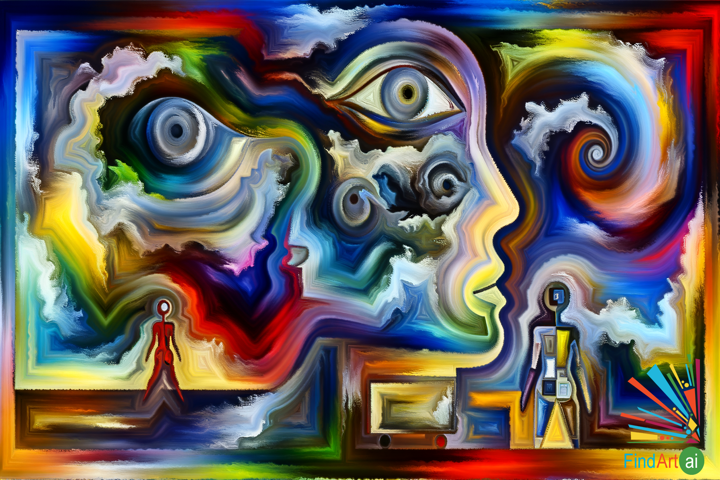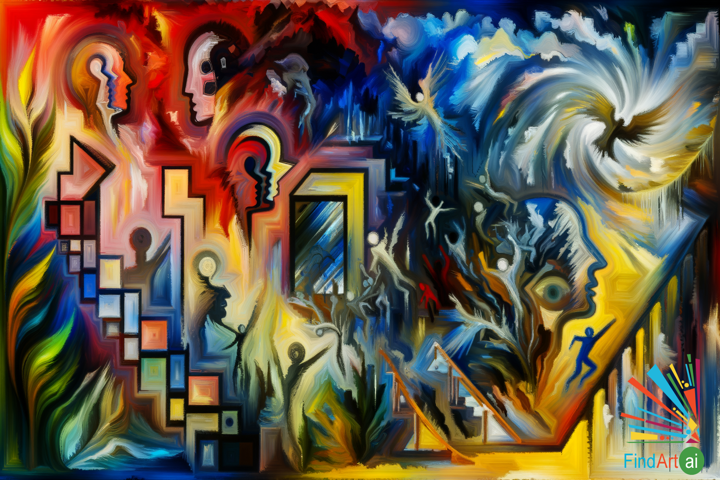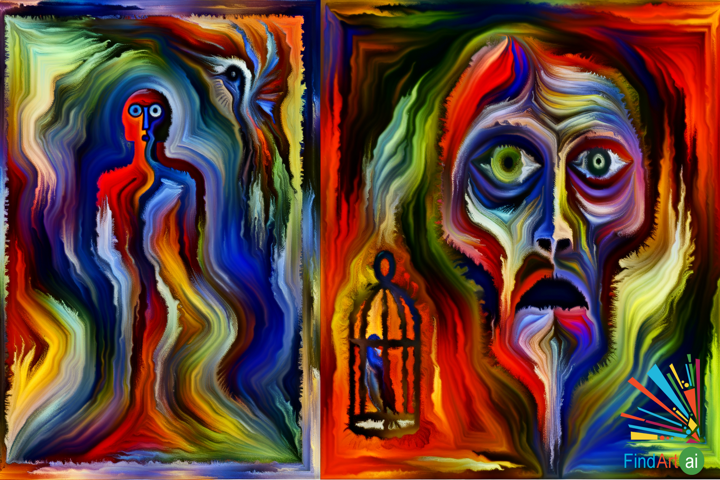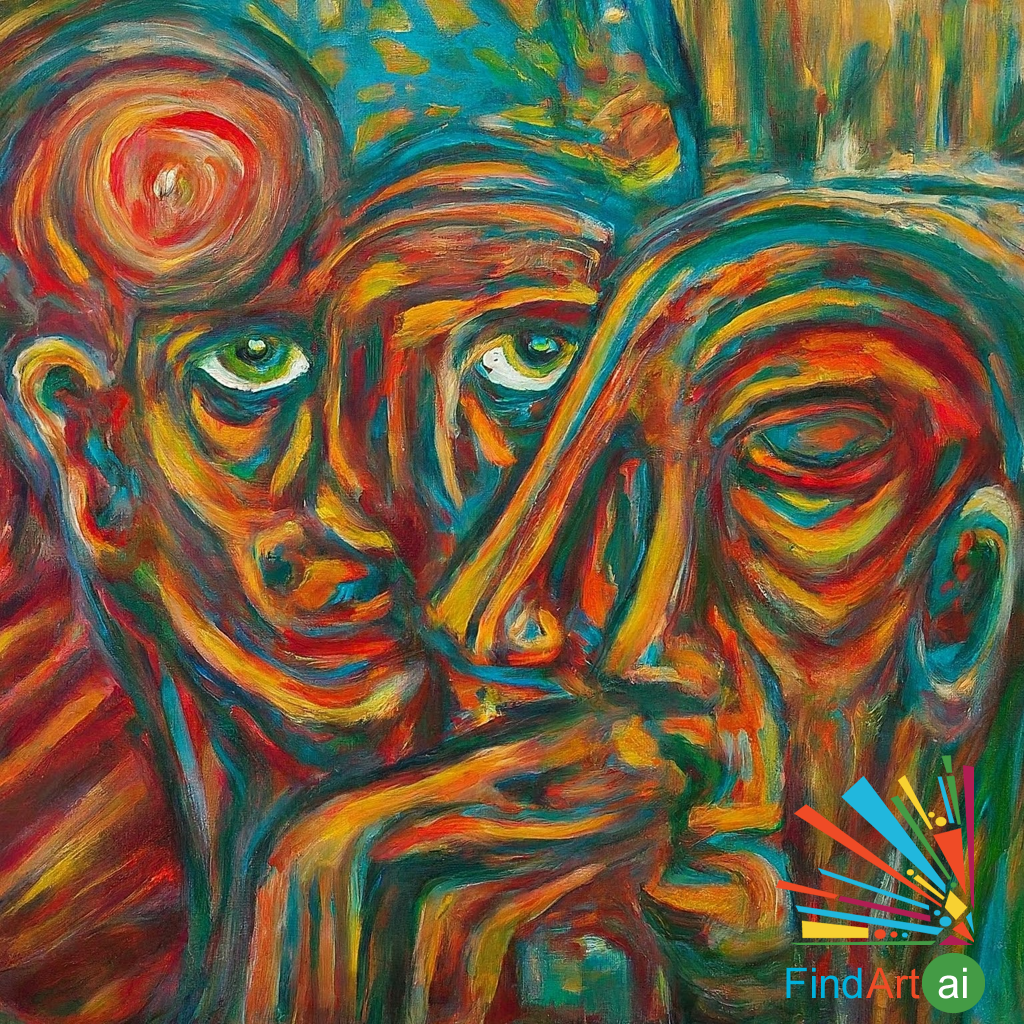
Expressionism Paintings with Inner Psychological States Theme
Expressionism paintings with an Inner Psychological States theme focus on depicting raw, intense emotions and the inner turmoil of the human experience. Emerging in the early 20th century, Expressionist artists sought to portray the world as felt internally rather than as it appears externally, using distortion, exaggerated forms, and vibrant, often jarring colors to convey subjective emotions like fear, anxiety, despair, and alienation. The goal of Expressionism is not to represent reality but to evoke the psychological and emotional depths of the human condition.
Key Characteristics of Expressionist Paintings with Inner Psychological States Theme
- Distortion of Forms
- Expressionist artists often distort figures, faces, and objects to convey emotional intensity. Bodies might be twisted, elongated, or deformed, reflecting internal struggles or mental anguish. The natural world is exaggerated to reflect a heightened emotional reality.
- Vivid, Non-Naturalistic Color
- Color is used symbolically and expressively, not realistically. Bright, unnatural colors—often clashing or intense—evoke specific emotions and psychological states. For example, deep reds may symbolize anger or passion, while blues and greens may reflect melancholy or sadness.
- Expressive Brushwork
- The physical application of paint in Expressionism often mirrors the emotional intensity of the subject matter. Bold, aggressive brushstrokes, thick layers of paint (impasto), or loose, swirling lines give a sense of urgency and emotional spontaneity, as if the artist’s feelings are directly transferred onto the canvas.
- Subjective Representation
- Rather than depicting the external world accurately, Expressionist paintings show how the artist perceives and feels about the subject. This leads to highly personalized and subjective depictions of figures and landscapes, often shaped by the artist’s own psychological state.
- Themes of Alienation and Anxiety
- Expressionist paintings frequently explore themes of alienation, fear, and anxiety, reflecting the uncertainties of modern life. Urban settings, lonely figures, and crowded yet claustrophobic environments are common, symbolizing existential isolation and inner conflict.
- Emotion Over Realism
- The emphasis in Expressionism is on conveying emotions, often at the expense of proportion, perspective, or realism. Figures may be disproportionate, with exaggerated features like wide eyes or contorted faces, emphasizing emotional intensity rather than physical accuracy.
- Dramatic Contrast and Tension
- Expressionist compositions often feature stark contrasts in color, light, and shadow, as well as sharp, angular forms, creating a sense of tension and unease. These visual contrasts reflect the emotional conflicts being explored in the painting.
Common Themes in Expressionist Paintings with Inner Psychological States
- Fear and Anxiety
- Expressionist paintings often evoke feelings of dread, fear, or anxiety through distorted forms and oppressive environments. These works reflect internal struggles, emotional instability, and existential fears.
- Example: Edvard Munch’s The Scream (1893), where the figure’s distorted, elongated face and the swirling, turbulent sky convey overwhelming anxiety and existential terror.
- Isolation and Loneliness
- Expressionist artists frequently depict figures that are isolated or disconnected from their surroundings, emphasizing feelings of loneliness and alienation. The urban experience, with its impersonal crowds and overwhelming environments, often serves as a backdrop for these emotions.
- Example: Ernst Ludwig Kirchner’s Street, Berlin (1913), where the exaggerated, mask-like faces of the figures suggest emotional detachment and alienation in a bustling city.
- Emotional and Mental Turmoil
- Many Expressionist works focus on inner psychological conflict, depicting mental anguish or emotional despair. Distorted forms and intense colors reflect the chaotic nature of these inner experiences.
- Example: Egon Schiele’s self-portraits, where his emaciated, contorted figures with intense facial expressions reveal his psychological vulnerability and inner turmoil.
- Existential Crisis
- Expressionist art often addresses the existential fears of modern life—questions about the meaning of existence, death, and human suffering. These paintings reflect the darker, more complex emotions that arise from confronting the uncertainties of existence.
- Example: Oskar Kokoschka’s Bride of the Wind (1914), which uses swirling, chaotic brushstrokes and disjointed figures to express the turmoil and emotional instability of a romantic relationship.
- Symbolic Use of Landscape
- In some Expressionist works, the landscape itself becomes a reflection of the artist’s psychological state. Jagged mountains, distorted trees, or swirling skies represent emotional turbulence, internal chaos, or existential dread.
- Example: Emil Nolde’s Stormy Sea (1930), where the wild, crashing waves and dark, foreboding sky mirror the artist’s inner emotional storm.
Whispers of the Subconscious: An Expressionist Journey into the Human Psyche
Whispers of the Subconscious is an Expressionist painting that plunges into the intricate labyrinth ...
Whirlwind of the Subconscious: An Expressionist Journey into the Tumultuous Inner Mind
"Whirlwind of the Subconscious" is an Expressionist oil painting depicting the tumultuous inner mind...
Exploring the Mind: A Vivid Expressionist Journey into Emotions and Thoughts
"The Echoes of the Mind" is a vibrant Expressionist painting that delves into the human psyche. A ce...
Whispers of the Subconscious: An Expressionist Journey into the Human Psyche's Depths
"Whispers of the Subconscious" is a vivid expressionist painting that explores the depths of the hum...
Reflections of the Subconscious: An Evocative Exploration of Human Emotions in Art
"Reflections of the Subconscious" is an evocative painting exploring human emotions through a vibran...
Turmoil Beneath the Surface": Exploring Human Emotion Through Expressionism's Bold Colors
"Turmoil Beneath the Surface" plunges into the depths of human emotion, capturing the tumultuous psy...

